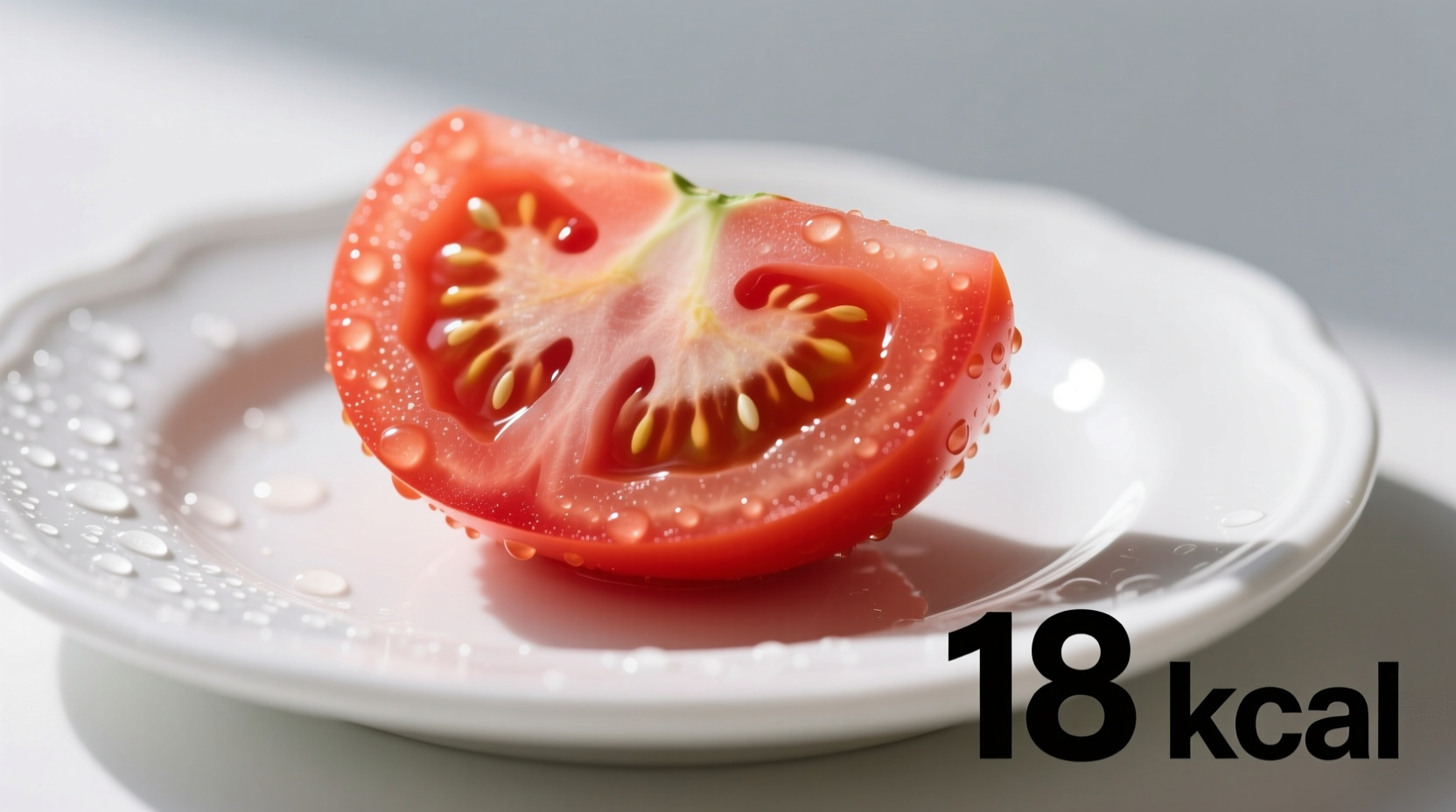Understanding the precise nutritional value of everyday foods helps you make informed dietary choices. When tracking your daily calorie intake, knowing exactly how many calories in a slice of tomato can significantly impact your meal planning strategy. This article provides accurate, science-backed information about tomato nutrition that you can trust and apply immediately.
What Determines Calories in a Tomato Slice
The exact calorie count depends on several factors that many nutrition resources overlook. Let's examine what truly affects the caloric value of your tomato slice:
| Tomato Slice Size | Weight (grams) | Calories | Carbohydrates |
|---|---|---|---|
| Small slice (1/10 of small tomato) | 8g | 1 cal | 0.2g |
| Medium slice (1/8 of medium tomato) | 12g | 2 cal | 0.5g |
| Large slice (1/6 of large tomato) | 18g | 3 cal | 0.7g |
| Cherry tomato (whole) | 12g | 3 cal | 0.6g |
This nutritional comparison comes directly from the USDA FoodData Central database, the most authoritative source for food composition information in the United States. The data reflects raw tomatoes without any added ingredients or preparation methods that might alter the nutritional profile.
Why Tomato Calories Matter for Your Diet
When considering how many calories are in a tomato slice, it's essential to understand why this information matters beyond simple calorie counting. Tomatoes offer remarkable nutritional density despite their minimal caloric contribution:
- Vitamin C powerhouse: One medium tomato provides 28% of your daily vitamin C needs
- Lycopene source: This powerful antioxidant gives tomatoes their red color and offers significant health benefits
- Hydration boost: Tomatoes are 95% water, helping you stay hydrated while eating
- Fiber content: Each slice contributes to your daily fiber intake, supporting digestive health

Practical Applications for Daily Nutrition Tracking
Knowing the exact calorie count in a tomato slice transforms how you approach meal planning. Here's how to apply this information effectively:
For Weight Management
Tomato slices provide volume and satisfaction with minimal calories. Add them generously to sandwiches, salads, and wraps without significantly impacting your daily calorie budget. A whole medium tomato (about 22 calories) can replace higher-calorie ingredients while enhancing flavor.
For Blood Sugar Management
With only 0.5 grams of carbohydrates per medium slice, tomatoes have a minimal impact on blood glucose levels. This makes them an excellent choice for people managing diabetes or following low-carb eating patterns.
For Meal Enhancement Without Calorie Overload
Many people searching for how many calories in a tomato slice are trying to balance flavor with calorie control. Tomatoes add substantial flavor and texture without requiring high-calorie dressings or sauces. Try these practical applications:
- Use tomato slices as a base for open-faced sandwiches instead of bread
- Add to omelets for moisture and flavor without additional fat
- Create layered salads with tomato slices as the primary ingredient
- Substitute for higher-calorie pizza toppings
Common Misconceptions About Tomato Calories
Several myths persist about tomato nutrition that can lead to inaccurate tracking. Understanding these context boundaries helps you apply the information correctly:
- Processing changes everything: Canned tomatoes, tomato sauce, and ketchup have significantly different nutritional profiles than raw slices
- Size matters more than you think: A "medium" tomato can range from 120-180 grams, dramatically affecting per-slice calculations
- Preparation method impacts nutrition: Cooking tomatoes increases lycopene availability but doesn't significantly change calorie content
- Not all tomatoes are equal: Heirloom varieties may have slightly different nutritional compositions than standard grocery store tomatoes
How Tomatoes Compare to Other Common Salad Ingredients
Understanding how many calories in a slice of tomato becomes most valuable when comparing with alternative ingredients. This comparison helps you make strategic choices for lower-calorie meals:
| Ingredient | Equivalent Serving | Calories | Key Nutritional Benefits |
|---|---|---|---|
| Tomato slice | 12g (medium slice) | 2 | Vitamin C, lycopene, hydration |
| Cucumber slice | 12g | 1 | Hydration, vitamin K |
| Avocado slice | 12g | 21 | Healthy fats, fiber, potassium |
| Cheese slice (cheddar) | 12g | 50 | Protein, calcium |
| Croutons | 12g | 60 | Carbohydrates, minimal nutrients |
This comparison clearly shows why tomatoes are such valuable components of calorie-conscious eating plans. You can add substantial volume and flavor with minimal caloric impact.
Maximizing Tomato Nutrition in Your Daily Diet
Now that you know exactly how many calories in a slice of tomato, here's how to incorporate this knowledge into practical, healthy eating habits:
- Track accurately: Use the 2-calorie figure for medium slices when logging in nutrition apps
- Boost volume: Add extra tomato slices to meals for satisfaction without calorie overload
- Pair strategically: Combine tomatoes with healthy fats (like olive oil) to increase lycopene absorption
- Vary preparation: Enjoy both raw and cooked tomatoes to access different nutritional benefits
- Season wisely: Enhance flavor with herbs instead of high-calorie dressings
Remember that the exact calorie count can vary slightly based on tomato variety and ripeness, but the 2-calorie estimate for a medium slice remains remarkably consistent across most common tomato types according to USDA measurements.











 浙公网安备
33010002000092号
浙公网安备
33010002000092号 浙B2-20120091-4
浙B2-20120091-4